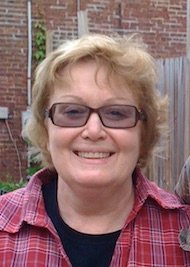
Mary McTamaney
By Mary McTamaney
Cokie Roberts, broadcast journalist and author, wrote the book, Founding Mothers: The Women Who Raised Our Nation. It brought to life true stories of the struggles of both well-known and hardly-known women in American history. Ms. Roberts told readers about the giant and everyday struggles that American women faced with strength and aplomb. As Women’s History Month comes to a close, it is worth opening the covers of local history books and searching for chronicles that shed light on local women. These accounts of women are not easy to find, especially from the centuries when women had few economic rights and were therefore covered in print as the final sentence or two in the stories of important men – “He was married to the former Eleanor Smith and they had four children.”
But if you pause during the reading of Newburgh area history and close your eyes to envision the scenes in those chronicles, the balance of male and female characters begins to appear. None of our history – and none of our progress - happened without the labor of women. Women were not just stirring cooking pots inside those early longhouses and log houses. They stepped outside and did far more.
Watching the first European settlers walk ashore at this spot on the Hudson in 1709 were Lenape women who soon taught the overwhelmed immigrants what could be eaten and what should be planted in this new world to stay alive and prosper. The fifty-two Palatine settlers were not explorers but refugee families who had already endured months of terrifying flight from war.
Anna Elizabeth Plettel came to what would later be named Newburgh with three young daughters to raise and keep safe from all the threats of wilderness.
Newburgh has always been an immigrant gateway and immigrants’ labor supported the industries that grew from the turn of the 19th century. While men were digging the rich clay beside the Hudson River and forming and baking bricks, women were set up in shanties nearby to wash the clothing of the brickyard laborers. Dianna Raiment was one of those women, an African-American born in 1764 who told census workers that she remembered the Revolution. Women who came to Newburgh or were born here in previous centuries made a living for themselves and their families with scores of entrepreneurial jobs like pushing food carts with their homegrown produce like eggs or their homemade cuisine such as pickles or ice cream. They took home “piecework” (things that could be done by hand like sewing collars and cuffs or hat trimming) from factories if they couldn’t leave their homes while caring for toddlers or the elderly in their family.
Working women were often in domestic service cleaning and cooking in hotels and rooming houses and in the private homes of wealthier Newburghers. Still, factories were a major worksite for women through the decades, just as they were for men. Women ran the looms at the woolen mills and the steam presses at the bleachery. It was hard, hot, hellish work. Their hands were cut and burned by the caustic chemicals. Their sleeves or hair could be caught in the moving parts of machines which is one reason that Newburgh’s work clothing factories invented and marketed overalls to the world market. My grandmother worked in the scorching heat of the bleachery beside Muchattoes Lake dunking and drying muslin to rinse and coat it with sizing. My own summer job once working in a commercial laundry taught me what respect I needed to carry for her long years of labor.
Women’s thin fingers as well as their attention to small detail made them prized workers on assembly lines – rolling cigars, weaving cane for porch chairs, spinning cotton. Women also endured the work men disdained like bedside nursing. In the first days of our local St. Luke’s Hospital, nurses carried patients from floor to floor for treatment on rubber stretcher sheets then cared for them in the beds they were assigned.
One women’s job I learned about from reading was that of violet harvesting. At the turn of the 20th century, violets grown in the Hudson Valley were all the rage. Their perfume, when carried or pinned to a collar, helped to mask the bad smells of urban life. Each morning in season, thousands of crates of them, gathered as small nosegays, were shipped to New York City. The gathering involved reaching out along endless rows of plants growing in greenhouses. To maximize production during the short growing season, the hothouse beds were closely planted together.
Gathering was done not by walking along rows, but by lying prone on a wooden plank which the picker moved foot-by-foot along a frame above the closely-planted rows to select and bundle only the perfect blooms of that day.
The perfect blooms of our lives are the women who carried us through.